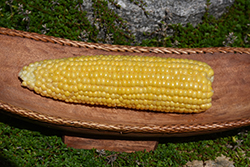Fri & Sat 8am - 8pm
Sun 8am - 7pm
Anytown, USA 12345
fax: 261.787.0463
e-mail: info@successgc.com


Plant Finder

Height: 5 feet
Spacing: 12 inches
Sunlight:
![]()
Hardiness Zone: (annual)
Group/Class: Sugar Enhanced
Description:
A wonderful sugar enhanced variety that is ready for late summer BBQs; produces slender 7" long ears packed with large, bright yellow kernels; deliciously sweet and tender, perfect for corn on the cob, adding to salads, canning, preserves and freezing
Edible Qualities
Sugar Buns Corn is an annual vegetable plant that is typically grown for its edible qualities, although it does have ornamental merits as well. It produces small cobs of yellow long kernels which are typically harvested when mature. The kernels have a sweet taste.
The kernels are most often used in the following ways:
- Eating When Cooked/Prepared
- Cooking
- Preserves
- Canning
- Freezing
Planting & Growing
Sugar Buns Corn will grow to be about 5 feet tall at maturity, with a spread of 12 inches. When planted in rows, individual plants should be spaced approximately 12 inches apart. This fast-growing vegetable plant is an annual, which means that it will grow for one season in your garden and then die after producing a crop. This is a self-pollinating variety, so it doesn't require a second plant nearby to set fruit.
This plant can be integrated into a landscape or flower garden by creative gardeners, but is usually grown in a designated vegetable garden. It should only be grown in full sunlight. It does best in average to evenly moist conditions, but will not tolerate standing water. This plant is a heavy feeder that requires frequent fertilizing throughout the growing season to perform at its best. It is not particular as to soil pH, but grows best in rich soils. It is somewhat tolerant of urban pollution. This is a selected variety of a species not originally from North America.
